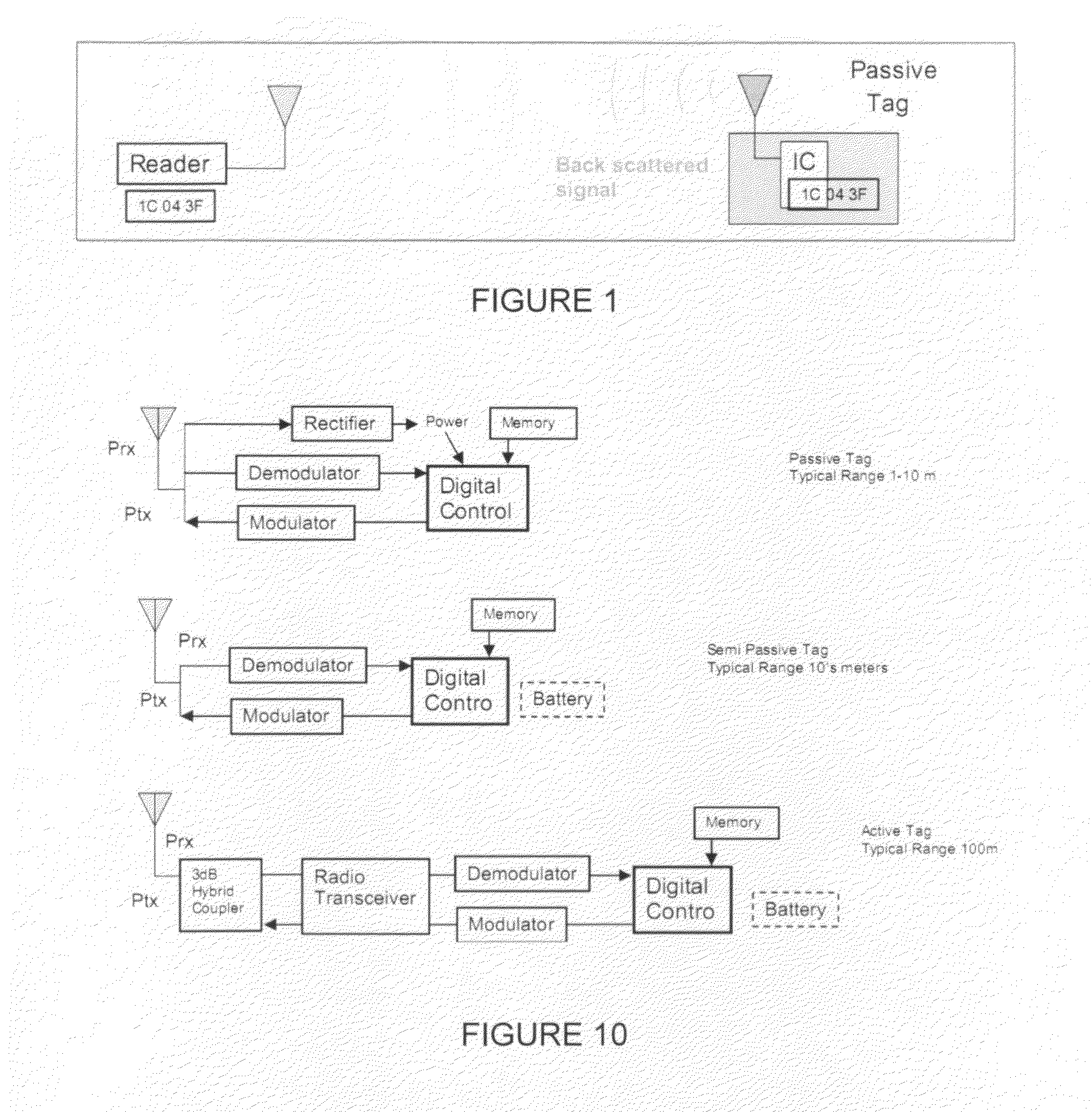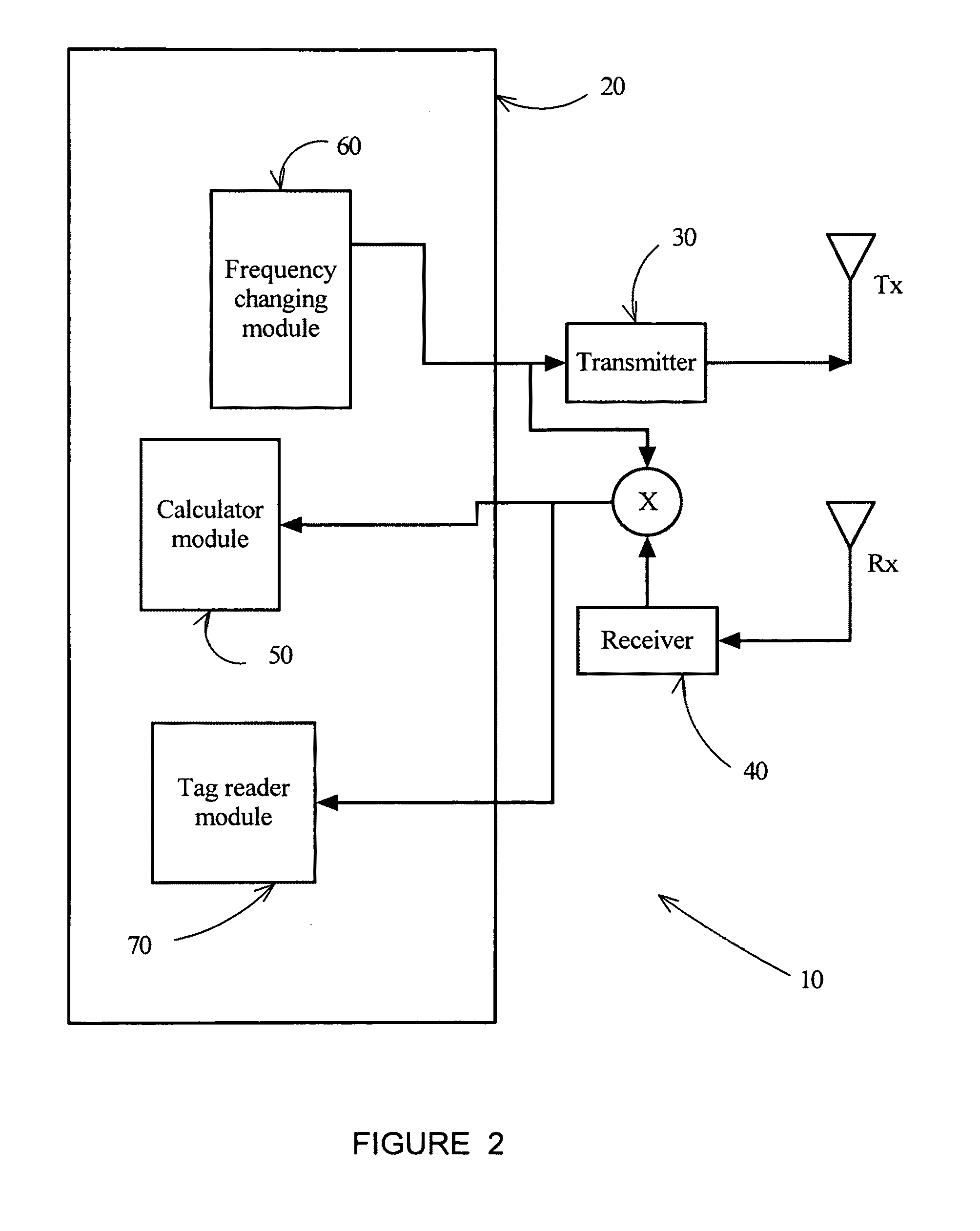Passive RFID tag reader/locator
a technology of radio frequency identification and reader, applied in the direction of electrical equipment, subscriber station connection selection arrangement, indirect connection of subscribers, etc., can solve the problems of no system on the market that allows for ranging to a passive rfid tag, and become problemati
- Summary
- Abstract
- Description
- Claims
- Application Information
AI Technical Summary
Problems solved by technology
Method used
Image
Examples
Embodiment Construction
[0052]To clarify the function of the invention, an overview of passive RFID operations is provided in FIG. 1. The reader / locator communicates with a passive RFID by means of a ASK (amplitude shift keying) modulated RF signal with changing carrier frequency. The RFID tag receives power from the RF signal of the reader / locator and reads a command from the reader / locator.
[0053]The reader / locator then continues to radiate an unmodulated changing frequency signal to energize the tag. After receiving a command from the reader / locator the tag starts to modulate its antenna impedance with a certain delay. The RF power transmitted by the reader / locator is back scattered by the tag antenna, thereby creating an RF signal at the receiver antenna of the reader / locator modulated with the information stored in the tag.
[0054]The reader / locator then receives the modulated frequency changing signal from the RFID tag. The modulation of the received frequency changing signal contains the data being tra...
PUM
 Login to View More
Login to View More Abstract
Description
Claims
Application Information
 Login to View More
Login to View More - R&D
- Intellectual Property
- Life Sciences
- Materials
- Tech Scout
- Unparalleled Data Quality
- Higher Quality Content
- 60% Fewer Hallucinations
Browse by: Latest US Patents, China's latest patents, Technical Efficacy Thesaurus, Application Domain, Technology Topic, Popular Technical Reports.
© 2025 PatSnap. All rights reserved.Legal|Privacy policy|Modern Slavery Act Transparency Statement|Sitemap|About US| Contact US: help@patsnap.com



